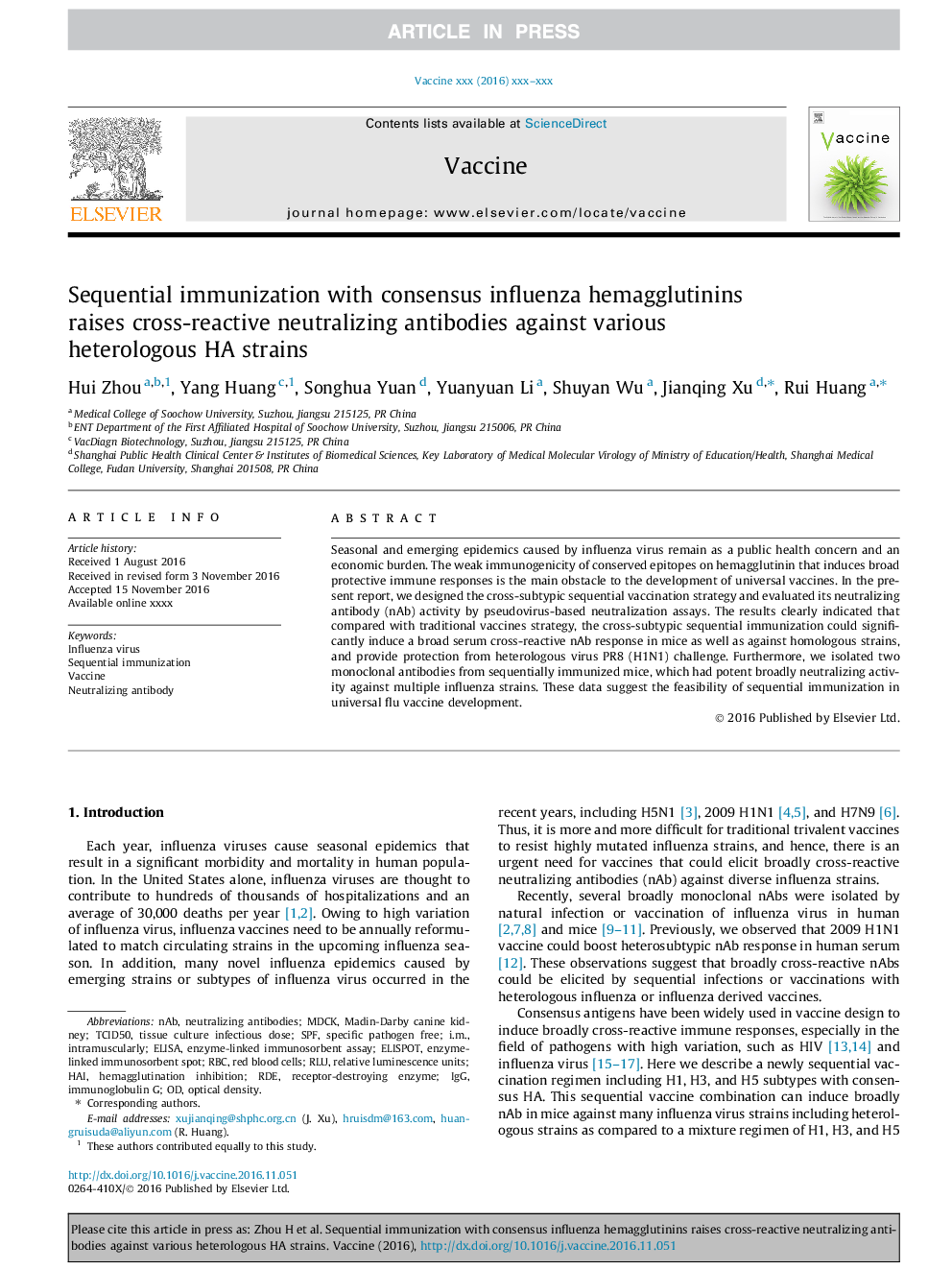| Article ID | Journal | Published Year | Pages | File Type |
|---|---|---|---|---|
| 5537280 | Vaccine | 2017 | 8 Pages |
Abstract
Seasonal and emerging epidemics caused by influenza virus remain as a public health concern and an economic burden. The weak immunogenicity of conserved epitopes on hemagglutinin that induces broad protective immune responses is the main obstacle to the development of universal vaccines. In the present report, we designed the cross-subtypic sequential vaccination strategy and evaluated its neutralizing antibody (nAb) activity by pseudovirus-based neutralization assays. The results clearly indicated that compared with traditional vaccines strategy, the cross-subtypic sequential immunization could significantly induce a broad serum cross-reactive nAb response in mice as well as against homologous strains, and provide protection from heterologous virus PR8 (H1N1) challenge. Furthermore, we isolated two monoclonal antibodies from sequentially immunized mice, which had potent broadly neutralizing activity against multiple influenza strains. These data suggest the feasibility of sequential immunization in universal flu vaccine development.
Keywords
RDETCID50IgGSPFNaBRBCELISPOTHAIMDCKRLURed blood cellsNeutralizing antibodyNeutralizing antibodiesimmunoglobulin GELISAEnzyme-linked immunosorbent assayIntramuscularlyi.m.hemagglutination inhibitionenzyme-linked immunosorbent spotrelative luminescence unitsVaccineInfluenza virusspecific pathogen freeoptical densitytissue culture infectious doseMadin-Darby canine kidney
Related Topics
Life Sciences
Immunology and Microbiology
Immunology
Authors
Hui Zhou, Yang Huang, Songhua Yuan, Yuanyuan Li, Shuyan Wu, Jianqing Xu, Rui Huang,
